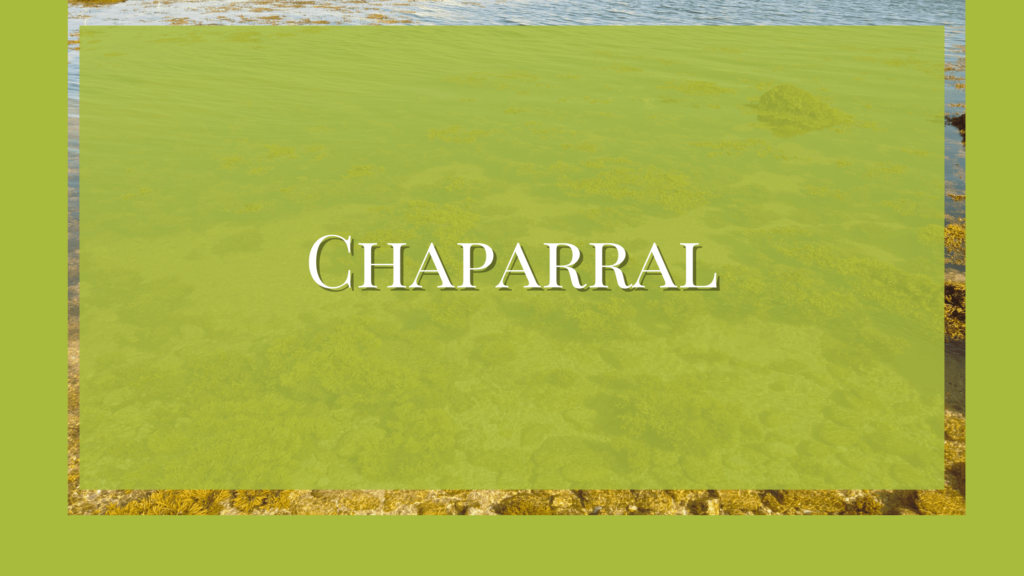The word chaparral came from the Spanish word “chaparro” referring to the scrub oak tree. These scrub oak trees are short and tolerant to drought, which is the most common vegetation in a chaparral biome. Short woody shrubs are the main vegetation in chaparral.
Chaparral Biome Definition
Chaparral refers to the hard-leaved evergreen sclerophyllous vegetation or biome with characteristic sclerophyllous plants. These plants have small but thick leaves, sunken stomata, and glandular hairs to help them reduce water loss during hot summer.
A chaparral contains different types of terrain from flat plants to mountain slopes. There will also be rocky mountains. The temperature here can increase to 40 degrees Celsius or more, leading to wildfires. Winters here are mild with average temperatures going as low as 10 degrees. The average rainfall here is between 10-17 inches per year, just enough to sustain the vegetation.
Chaparral Biome Examples
Similar biomes are seen in the Mediterranean Basin, Australia, and South Africa as well. In the Mediterranean, it is called the Mediterranean Forest. But in the US, these sclerophyllous shrubs are called the chaparral. Such chaparral biome, shrubland biome, or scrubland biome has short trees or shrubs with woody stems with no central wood. This is primarily found in California. The climate here is hot and dry summers with mild winters, which is suitable for such a biome
Chaparral Biome Characteristics
- The characteristic features of the chaparral biome are long and rainy but mild winters, followed by hot and dry summers along the west coast along the South and North altitudes. The annual precipitation here is 30-50 cm.
- Both plants and animals in the chaparral biome are adapted to these conditions and can even survive without water for longer periods.
- The plants here have drought-like adaptations and can resist fire that often happens due to lightning during summer.
- They will have a waxy coating to prevent water loss.
- There will be different types of plants seen in different biomes that are perfectly suitable for the specific conditions. Oaks, Eucalyptus, and scrub pines are some examples.
- Evergreen shrubs are another example. Other plants are kwongan, maquis, and matorral. Some are even adapted for salty areas.
- The greenland chaparrals or savannas in central California have sages, cacti, and yucca.
Impact of Climate Change on Chaparral Biome
Due to climate change, the chaparral biome has become hotter and drier. There have been more wildfires as a result of these changes. These conditions put more stress on the plants which in turn cause environmental changes.
Wildfires in chaparral are common as well as beneficial for them. The harder parts of the plants get destroyed in fire but they regenerate new leaves and roots later. However, the increased number of fires due to climate change is destroying these natural ecosystems. It is causing reduced biomass, a lesser number of animals inhabiting these areas, less plant diversity, the presence of non-native plants, and the inability or reduced ability of the biome to contain carbon dioxide.
References
- Rudy, L. J. (2021, June 14). Chaparral Biome: Locations, Plants, and Climate. Treehugger. https://www.treehugger.com/chaparral-5113938
- Biomes, B. P. (n.d.). Blue Planet Biomes – Chaparral Biome. https://www.blueplanetbiomes.org/chaparral.php
- Admin, A. W. (2020, October 7). The Chaparral Biome Facts, Pictures & In-Depth Information. Active Wild. https://www.activewild.com/chaparral/





So much appreciation! 🎊